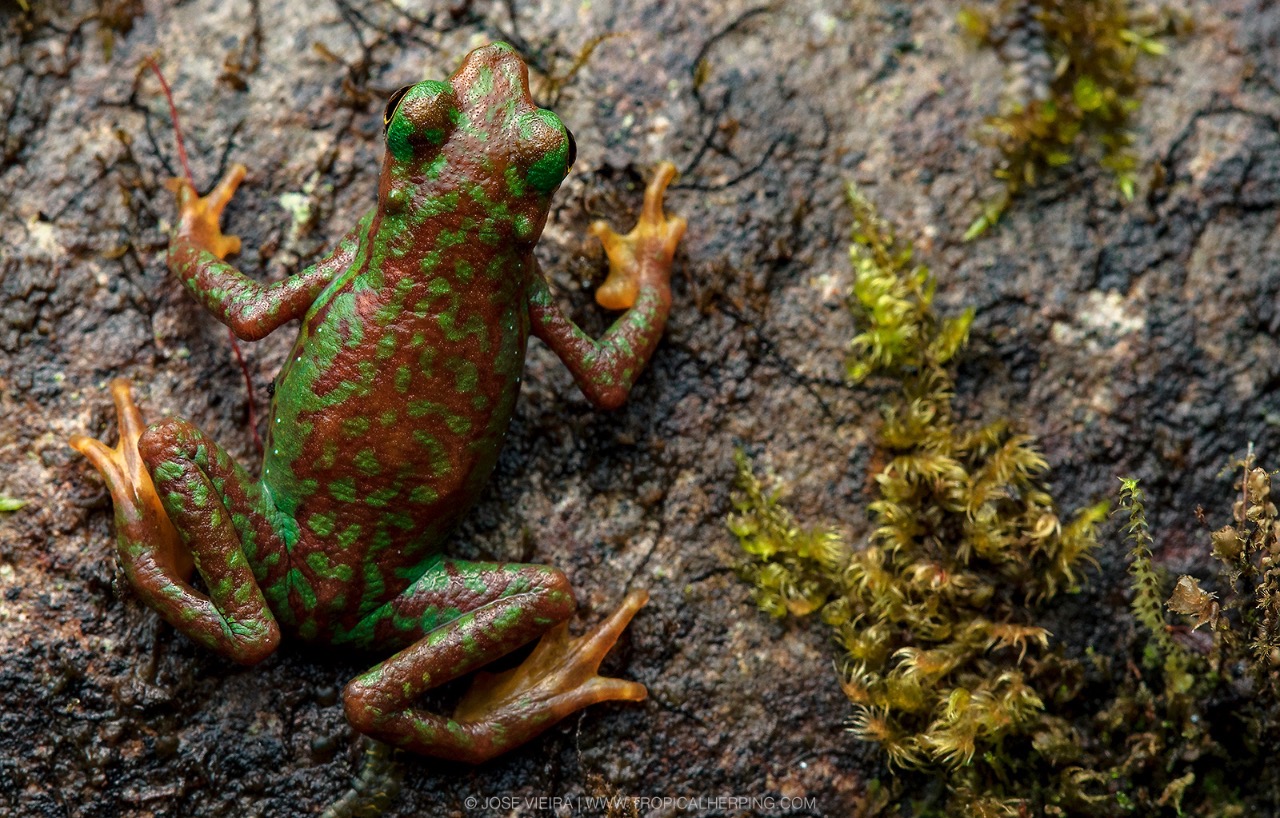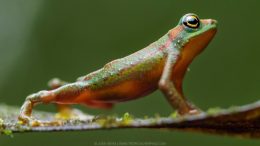If the Mindo harlequin toad had a yearbook photo, its caption might have read “most unlikely to be rediscovered.” The tiny, Christmas-colored species was declared “possibly extinct” two years ago, after not being seen in its Ecuadorian habitat since 1989. It and several other species from the same region have long been feared lost to the amphibian-killing chytrid fungus, which has already caused dozens of extinctions around the globe.
But you know what yearbook photo captions are like: They’re destined to be proven wrong.
And that’s what’s happened with the Mindo harlequin toad (Atelopus mindoensis). New research reveals that the long-lost species is alive — if not exactly well.
The rediscovery came as a surprise, since no one was looking for the lost toad.
“The team was not looking for Atelopus or even expecting them,” explains Alejandro Arteaga, president of Tropical Herping and the senior author of the paper announcing the species’ rediscovery. “The cloud forests where it lives are the most thoroughly documented in the country, and no one had seen them in 30 years.”
Instead, the research team — including experts from the Tropical Herping, the University of New Brunswick and other institutions — was on a private reserve documenting other Ecuadorian frog species. There, on a narrow path next to a creek, they saw a single juvenile frog sleeping on a leaf about a foot and a half off the ground. Upon inspection, they realized it bore the distinctive red-and-green coloration, elongated noses and mitten-like webbed fingers that had previously been used to describe the Mindo harlequin toad.
Amazed by what they’d found, the researchers returned to the site for a second visit and found five more frogs on the opposite side of the creek, including three juveniles and two adult males.

Arteaga wasn’t present for the discovery, but the team quickly conveyed photographs — they just didn’t let him know in advance what the pictures contained.
“My friends actually videotaped my reaction, as they knew I was going to be blown away,” Arteaga reports. “They were right. It took me several minutes to even realize that I was seeing an actual living Mindo harlequin toad. It was one of the happiest moments of my life.”
And there was more good news: Skin tests on two of the juveniles revealed no sign of Batrachochytrium dendrobatidis, the fungus behind the chytrid crisis. That doesn’t necessarily mean the fungus isn’t present in the reserve, or that other frogs or toads there aren’t affected, but it was another welcome discovery.
And while the rediscovery doesn’t indicate a very populous species, it does reveal that enough of them exist to keep breeding.
However, their survival remains precarious. The private reserve — the exact location of which remains undisclosed — has pristine waters and lacks predatory invasive trout that have caused amphibian declines in other parts of Ecuador, but that could change. The researchers caution that trout could easily make their way to the reserve, as could the pesticides currently being used upstream. Humans could also carry the Bd fungus or other infectious diseases to the habitat.
Now that the toad has been rediscovered, the real work begins. “We’ve already sent a proposal to obtain funding for monitoring and helping establish an ex situ conservation ‘backup’ colony,” Arteaga says. The paper also recommends intense additional searches both in the private reserve and throughout the toad’s historic range, as well as education programs to help local peoples understand the species and conduct citizen-science efforts to help assure its survival.
And, of course, this provides an incentive to see what other presumed-extinct harlequin toad species might still exist.
“After the rediscovery, we have started a ‘rescue mission’ project seeking to find the remaining 12 species that are still lost,” Arteaga says. Several other Atelopus species have been rediscovered in the past few years ago, so hope remains eternal.
Just like yearbook photos.
![]()


